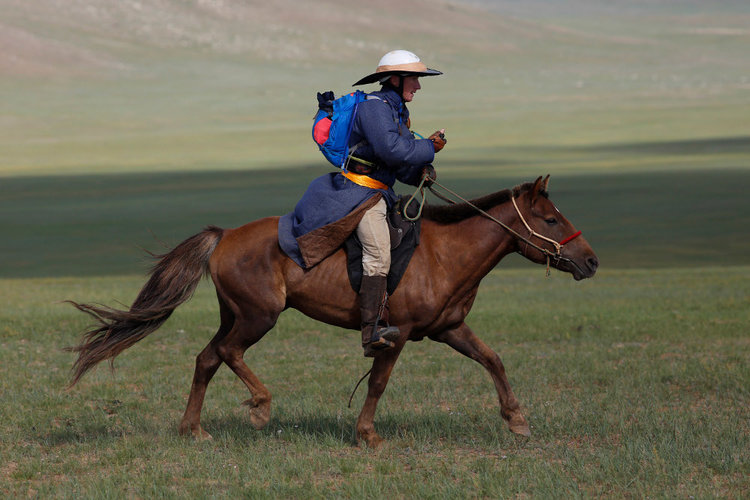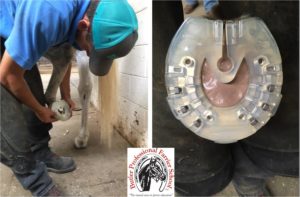Endurance Horses
Distance riding competitions have become popular in the United States and all over the world in recent years. Distance riding competitions consist of both endurance and competitive trail riding. These competitions showcase a horse’s ability to cover large distances without becoming too fatigued. Speed, horsemanship and the condition of the horse are all factors that are judged in these types of competitions. Endurance horses are the marathon runners of the horse industry.
Endurance races are usually 50 or 100 miles long and are typically completed in a day (24 hours). Competitive rides involve timed riding from 20 to 40 miles a day for 1 to 3 days. Endurance horses may be led or driven over the course whereas competitive horses must be ridden every step of the way. Endurance horses are primarily judged on how quickly they complete the course in good condition. Competitive horses are judged on several other factors including rider behavior and timed riding, meaning there is an allotted time to complete the course and the rider cannot come in before or after that time.
The Mongol Derby is the longest competitive trail ride in the world. It is 1000 kilometers (621.37 miles) long over 10 days. The course recreates the horse messenger postal system across Mongolia developed by Chinggis Khan. Will Comiskey, a former student from Butler Professional Farrier School, won that race in 2016 and placed fourth the following year in 2017. To complete the race in seven days, he kept a pace of about 140 km (~87 miles) per day. Horses are changed out every 40 kilometers (~25 miles) and must pass wellness exams by a qualified veterinarian to ensure good health.

Former Butler Professional Farrier School student, Will Comiskey raced in the Mongol Derby – the longest race in the world (1000 kilometers). He won the race in 2016 and placed fourth in 2017 making him the most successful derbyist to ever ride in the race; a first place and a fourth place; two finishes from two starts. Picture by: (C) Julian Herbert (theadventurists.com)
In the United States, the Tevis Cup, a 100 mile course, is the ultimate achievement in Endurance racing. It is well-known for its high altitude and rough terrain. The course stretches from Lake Tahoe area (near Truckee, Nevada) across the Sierra Nevada Mountain Range to Auburn, California. The event is usually held at the end of July or beginning of August to avoid snow in the mountains and to take advantage of a full moon for night riding. The course must be completed in 24 hours. Vet checks are performed along the way to ensure the horse isn’t being pushed too hard.

Endurance horses wear light weight shoes. This is a plastic shoe nailed on with a composite plastic underneath to protect the sole and frog from rough terrain.
Laura Hayes, a client of Butler Professional Farrier School, rode in the Tevis Cup this year. She has completed the course twice before in 2009 and 2014. We shod her horse with plastic shoes for this year’s event.
Shoe weight is critical to the success of horses. Plastic shoes can be glued on or nailed on. Aluminum shoes, although light weight, are not commonly used because they tend to wear out before the 100 mile ride is over! Light plain or light concave shoes with light pads that protect the sole have been popular. Titanium shoes are popular because they reduce weight and extend wear. However, they are very expensive. Borium® is another good option to extend shoe wear on light steel shoes. Spooned heels may be used to protect the heel bulbs in rocky terrain.
Related Posts
-
-
We all want to help our horses to be comfortable and sound. ...May 09, 2019 / 0 comments
-
The summer season is upon us once again. For Butler Professi...May 31, 2018 / 0 comments
Blog Categories
- Anatomy
- Best Business Practices
- Conformation
- Current Events
- Customer Service
- Draft Horse Shoeing
- Equine Soundness
- Essential Anatomy Kit
- Farrier Careers
- Farrier training
- Foal soundness
- Horse Care
- Horse Foot Care
- Horse Owner Tips
- Horsemanship
- Horseshoeing
- Horseshoeing History
- Iron and Forge Work
- Student Spotlight
- Uncategorized
- Veterinary Care
Blog Archives
Contact Us
Butler Professional Horseshoeing School
495 Table Road
Crawford, NE 69339
(800) 728-3826
jacob@dougbutler.com
Subscribe to Our Blog
Get Our Free e-Book!
If you think you want to become a farrier (or know someone who does), this book can help you make that decision. Horse owners will learn the importance of choosing a qualified farrier and how to select the “right” one.
[ Get the e-Book Now! ]
- Follow:
